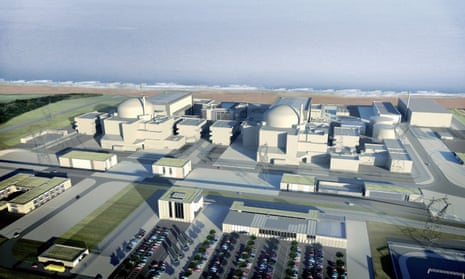Britain faces a problem in coping with its complex energy demands. It needs to provide extra energy to meet rising demands for power in coming decades but at a reasonable cost – while also reducing carbon emissions by considerable levels in order to meet its climate change commitments. This is not an easy combination to achieve. However, Hinkley Point was considered by many experts to be a crucial aid in reaching these goals.
With its massive 3.2bn watt capacity, Hinkley Point C would provide 7% of the nation’s electricity when completed. Night and day, it would help to generate the power that would keep the nation working while renewable energy sources, mainly wind plants, would provide the rest of the electricity needed by homes and offices. “You have to have some baseload source to provide power when it is utterly calm and renewables are not providing energy,” explains Bob Ward, of the Grantham Research Institute. “Gas and coal plants – which can also supply that baseload – will no longer be viable in future because of their carbon emissions, which cause global warming. You are then left with nuclear.”
This dilemma reveals a major drawback that affects renewable energy. Wind and solar plants are intermittent power suppliers. They often provide power when it is not needed but fail to supply it when it is required. And until a method of storing energy on an industrial scale is developed, this drawback will continue to bedevil its deployment across the country. Research into ways to store energy on a large scale is now being pursued across the globe but may take decades. Similarly, other game-changing energy projects are being worked on.
One of the most important of these is fusion power. This aims to recreate the process that provides the Sun with its energy. Nuclei of hydrogen atoms are fused together at colossal temperatures inside huge reactors to create helium nuclei – and a great deal of excess energy, but little pollution or radioactive contamination. However, current devices – in particular the international Iter fusion reactor being built in France with British involvement – are currently years behind schedule and vastly over budget. Few experts believe fusion will get us out of our current energy problem.
Alternatively, we could continue to use fossil fuel plants but take their carbon dioxide emissions, liquefy them and then pump into the ground, a procedure known as carbon capture and storage. Britain has huge, empty North Sea oil fields which many geologists and energy experts believe would be ideal for storing liquefied carbon dioxide. Several test projects were set up in recent years, with the government pledging to provide funding of up to £1bn until, in November last year, it abruptly cancelled the programme, halting work on all major British CCS projects.
As Luke Warren, chief executive of the Carbon Capture and Storage Association, said at the time: “This is devastating. This technology is critical for the UK’s economic, industrial and climate policies.” These may prove to be prophetic words.

Comments (…)
Sign in or create your Guardian account to join the discussion